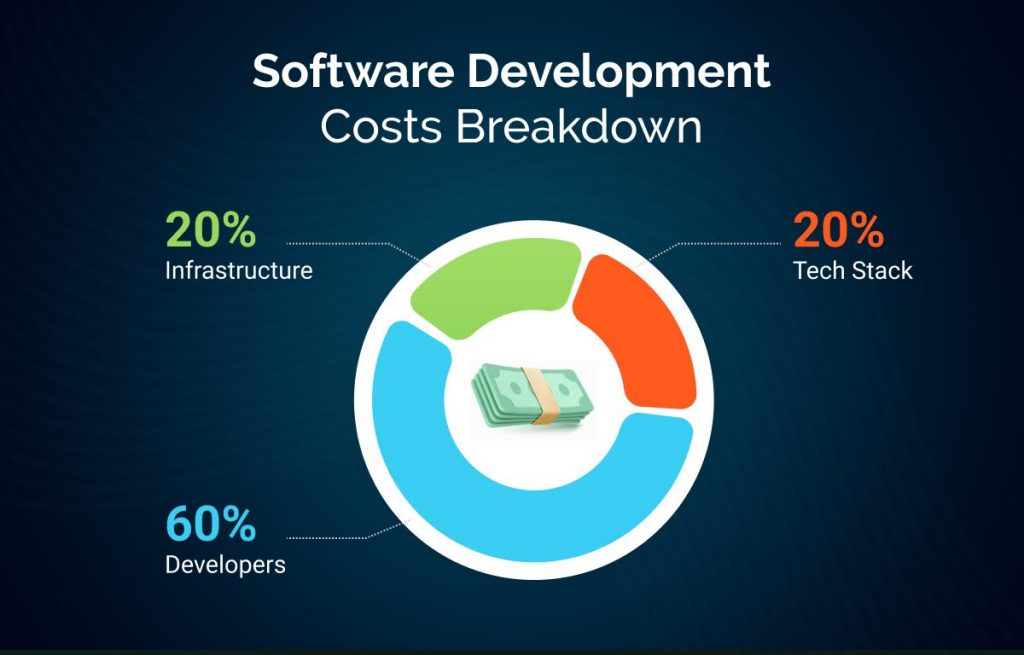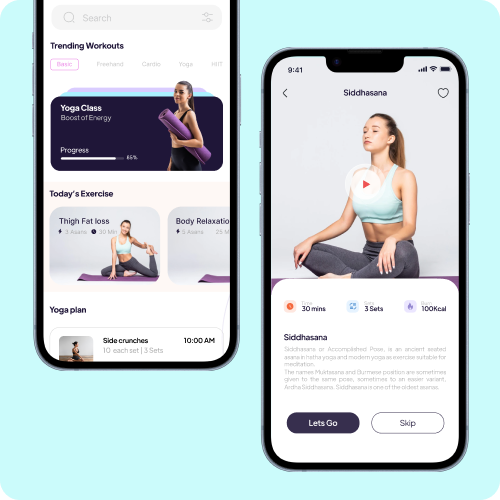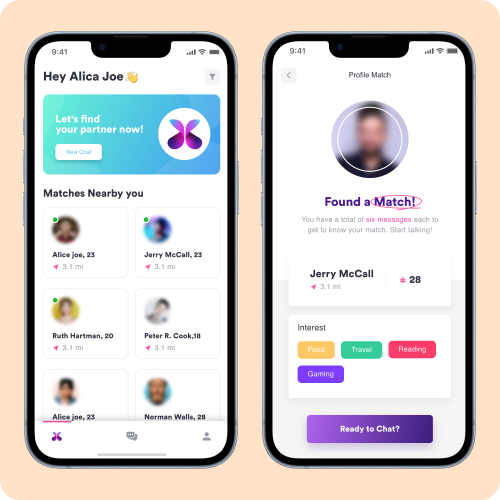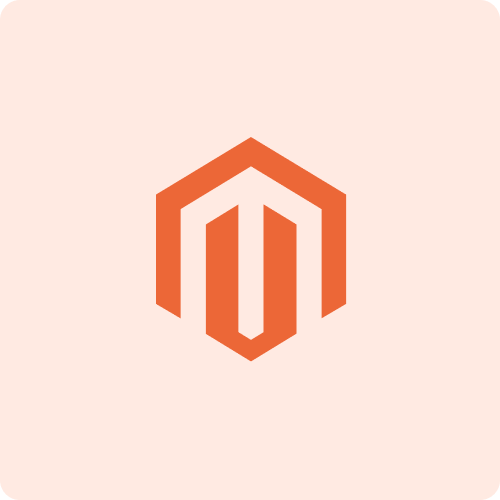In 2024, the world of fitness apps is buzzing with opportunities but entrepreneurs need to understand that the fitness app development cost is crucial. Why? Well, diving into fitness app development without a clear budget plan is like jogging without proper shoes—risky and uncomfortable.
So, what’s the big deal about the cost? Think of it this way: if you’re planning to create a fitness app, you need to know how much you’ll spend. It’s not just about making an app; it’s about making a successful one without breaking the bank.
Building a fitness app isn’t like downloading a game on your phone. There are specific steps, investments, and choices involved. That’s where fitness app developers come into play. These are the experts who know the ins and outs of turning your idea into a functional app. But before you reach out to them, you must have a grasp of the costs involved.
Imagine trying to build a fitness app blindfolded. You might stumble, make costly mistakes, or miss out on essential features. By understanding the fitness app development cost, entrepreneurs can set realistic goals, allocate resources wisely, and increase their chances of success.
Resourcifi can help you figure out the most cost-effective path to fitness app development. We have been helping many businesses to build fitness apps like MyFitnessPal and create an impact on the Global fitness industry.
In this guide, we’ll break down everything you need to know about the fitness app development cost. Whether you’re a seasoned entrepreneur or someone exploring how to create a fitness app, this information will be your roadmap. So, buckle up and let’s navigate the exciting yet challenging terrain of fitness app development together!
Fitness App Market Overview
Based on the information provided, the global fitness app market is projected to experience significant growth in the coming years. The market was valued at USD 1.54 billion in 2023 and is expected to grow at a compound annual growth rate (CAGR) of 17.7% from 2024 to 2030.
The market growth can be attributed to the impact of the COVID-19 pandemic, which led to the adoption of social distancing measures and nationwide lockdowns, resulting in increased demand for fitness apps.
Fitness apps are mobile applications designed to support various aspects of general well-being, including exercise, physical training, yoga, mindfulness, nutrition, and diet. These apps have gained popularity due to their convenience, user-friendly interfaces, and ability to provide personalized fitness programs and tracking features.
The increased number of working individuals with busy lifestyles has also contributed to the growth of the fitness app market. With limited time dedicated to fitness, people are turning to these apps to stay active and improve their overall health.
The market is expected to reach a value of US$ 6.48 billion in 2022 and grow at a rate of 21.4% CAGR from 2023 to 2029, potentially reaching almost US$ 25.19 billion by 2029. The fitness app market is forecasted to grow at a CAGR of 24.3% from 2023 to 2030. This growth can be attributed to the increasing awareness of the importance of physical fitness.
The growing adoption of smartphones and wearable devices. These apps provide users with personalized workout plans, real-time tracking of progress, and integration with other health-related apps and devices.
Overall, the fitness app market is expected to witness significant growth in the coming years, driven by factors such as the impact of the COVID-19 pandemic, busy lifestyles, and technological advancements in mobile devices and wearables
Fitness App Development Strategy
With fitness app development, a strategic approach is key to navigating the landscape effectively. The fitness app development cost is a crucial factor that demands a well-thought-out strategy. Entrepreneurs must align their development strategy with budget constraints, ensuring a successful and cost-effective venture.
The first step in the fitness app development strategy is to define clear objectives. Entrepreneurs should outline the primary goals of their fitness app, whether it’s tracking steps, offering personalized workouts, or integrating advanced features like AI-driven coaching. This clarity sets the foundation for making informed decisions throughout the development process.
Next, entrepreneurs should conduct thorough market research to understand target audiences and analyze competitors. By identifying market trends and user preferences, they can tailor their app to meet specific demands, increasing the likelihood of success. This market-focused approach allows entrepreneurs to allocate resources wisely.
Avoiding unnecessary expenses in the highly competitive create a fitness app market is a must. Choosing the right development team is another critical aspect of the strategy. Entrepreneurs can opt for experienced fitness app developers who understand the nuances of the industry.
Whether collaborating with renowned agencies or skilled freelancers, the choice should align with the app’s complexity and the entrepreneur’s budget. This strategic decision ensures the development team’s expertise contributes positively to the overall success of the fitness app.
Moreover, a phased development approach can be a prudent strategy. Breaking down the development process into manageable stages allows entrepreneurs to monitor progress, make necessary adjustments, and control costs effectively. This incremental strategy aligns with a budget-conscious mindset, ensuring that how to create a fitness app becomes a streamlined and efficient process.
A well-defined fitness app development strategy is indispensable for entrepreneurs aiming to build a successful app without breaking the bank. By setting clear objectives, conducting market research, choosing the right development team, and adopting a phased approach, entrepreneurs can navigate the complexities of the fitness app development landscape, maximizing their ROI potential.

Read more – Fitness App Development – Ultimate Guide To Build Your Own App in 2023
Types of Fitness Apps
Within the expansive world of fitness apps, entrepreneurs exploring fitness app development cost should understand the diverse types available to meet varying user needs. These apps offer a spectrum of functionalities, ensuring a wide market reach.
Basic Fitness Apps: Focused on fundamental features such as step tracking and calorie counting, these apps provide simple health monitoring, making the create a fitness app process more cost-effective for users seeking basic health insights.
Advanced Fitness Apps: Going beyond the basics, these apps offer real-time coaching, AR workouts, and personalized nutrition plans. While enhancing user engagement, entrepreneurs must consider the potential increase in how much does it cost to build a fitness app associated with advanced functionalities.
Specialized Fitness Apps: Tailored to specific niches, such as yoga or HIIT training, these apps target distinct user preferences. Entrepreneurs adopting a niche-focused approach should assess market demand and profitability, aligning their fitness app development strategy with the needs of a particular user base.
Hybrid Fitness Apps: Integrating multiple features, these apps provide a comprehensive wellness experience. Entrepreneurs must carefully evaluate the associated fitness app development cost to strike a balance between functionality and budget.
Personal Trainer Apps: Offering personalized workout plans, these apps act as virtual trainers. Entrepreneurs should consider user demand and potential cost implications when venturing into the development of such fitness apps.
Home Workout Apps: Tailored for users who prefer exercising at home, these apps provide guided home workouts. Entrepreneurs targeting this market should align their fitness app development cost with the demand for convenient and accessible fitness solutions.
Nutrition & Diet Apps: Focused on dietary planning, these apps help users manage their nutrition. Entrepreneurs entering this space should consider the potential costs associated with developing features like personalized meal plans.
Activity Tracking Apps: Geared towards monitoring various physical activities, these apps provide insights into overall fitness. Entrepreneurs must assess the how to create a fitness app strategy by considering the demand for comprehensive activity tracking features.
Meditation Apps: Catering to mental well-being, these apps offer guided meditation sessions. Entrepreneurs should recognize the growing demand for mental health-focused features and assess the fitness app development strategy accordingly.
Understanding these varied types is essential for entrepreneurs to make informed decisions and align their fitness app with user demands, market trends, and budget constraints.
Don’t miss out – Wearable App Development – How to Build A Wearable App?
Technology Stack Used for Fitness App
In the realm of fitness app development, understanding the technology stack is vital for entrepreneurs planning their costs in 2024. The technology stack, essentially the combination of programming languages, frameworks, and tools, plays a significant role in shaping the efficiency and functionality of fitness apps.
Front-End Technologies: These determine the user interface (UI) and user experience (UX) of the app. Commonly used technologies include HTML, CSS, and JavaScript. Entrepreneurs must allocate sufficient resources to ensure an intuitive and visually appealing interface, contributing positively to the overall fitness app development cost.
Back-End Technologies: Responsible for server-side development, back-end technologies like Node.js, Ruby on Rails, or Django handle data storage, user authentication, and server management. Entrepreneurs should assess the scalability and performance features of these technologies to align with their app’s goals and potential future growth, impacting the how much does it cost to build a fitness app.
Database Management Systems: Storing and retrieving user data efficiently is crucial. Entrepreneurs must decide on database technologies like MySQL, PostgreSQL, or MongoDB. The choice depends on factors like data complexity and scalability requirements, influencing the overall fitness app development costs.
Application Programming Interface (API): APIs enable communication between different software components. Entrepreneurs should consider integrating third-party APIs for features like fitness tracker compatibility or social media sharing. This integration can add value but may impact the create a fitness app budget, depending on the complexity.
Cloud Services: Hosting and storage are often outsourced to cloud platforms like AWS or Azure. While offering scalability, entrepreneurs need to weigh the associated costs. Balancing scalability with budget constraints is crucial in determining the overall how to create a fitness app journey.
Security Measures: With user data privacy being paramount, entrepreneurs should invest in security technologies like SSL certificates and encryption protocols. Implementing robust security measures ensures user trust but may add to the fitness app development cost.
Considering the technology stack as an integral part of the fitness app development strategy is essential for entrepreneurs. By aligning the chosen technologies with the app’s goals, scalability requirements, and user expectations, entrepreneurs can optimize costs and create a robust, user-friendly fitness app in 2024.
Bonus: Trending Features To Include In Your Fitness App
1. Personalized Workouts
Addressing individual fitness goals is paramount in the competitive landscape of fitness apps. By leveraging artificial intelligence (AI), entrepreneurs can incorporate personalized workout plans aligned with users’ specific objectives. The integration of tailored routines not only enhances user satisfaction but also increases adherence to fitness regimens. This user-centric approach adds significant value to the app, contributing to its overall success in the market.
2. Augmented Reality (AR) Workouts
Elevate user engagement by integrating augmented reality (AR) technology into workout experiences. This cutting-edge feature adds a new dimension to fitness routines, making them more interactive and enjoyable for users. The immersive nature of AR workouts not only sets the app apart from competitors but also enhances the overall user experience. As users seek innovative and engaging ways to stay fit, incorporating AR workouts becomes a strategic move for entrepreneurs in the fitness app development industry.
3. Real-time Coaching
Motivating users to achieve their fitness goals is a core aspect of any successful fitness app. The integration of real-time coaching features, facilitated by virtual coaches within the app, provides users with immediate guidance, feedback, and encouragement during their workouts. This personalized approach not only boosts user morale but also contributes to improved performance. Entrepreneurs can capitalize on this trend to create a dynamic and supportive environment within their fitness app, attracting and retaining a dedicated user base.
4. Nutrition and Meal Planning
Beyond exercise tracking, users are increasingly seeking comprehensive wellness solutions. Integrating features for personalized nutrition plans and effective meal tracking addresses this growing demand. This holistic approach ensures that users can manage both their fitness routines and dietary habits within the same app. Entrepreneurs can position their fitness app as an all-encompassing wellness tool, aligning with the evolving expectations of users in 2024.
5. Wearable Device Integration
Seamless user experience is a key factor in the success of any fitness app. By syncing the app with popular wearable devices, entrepreneurs can provide users with a comprehensive overview of their health metrics and fitness activities. This integration ensures that users can effortlessly monitor their well-being, fostering a sense of control and motivation. With wearable devices becoming integral to many users’ lifestyles, compatibility enhances the app’s accessibility and utility.
Incorporating these trending features into a fitness app is not only about staying current but also about meeting the evolving expectations of users in 2024. Users seek holistic wellness solutions by integrating personalized workouts, AR experiences, real-time coaching, nutrition features, and wearable device compatibility. As the fitness app development cost is a critical consideration, these features contribute to the app’s overall value, attracting and retaining a dedicated user base.
Read more – Fitness App Development – How to Build Apps like MyFitnessPal
Factors Influencing Fitness App Development Cost
When considering the fitness app development cost, several factors can sway the final figure. Understanding these elements is essential for entrepreneurs venturing into fitness app development.
Firstly, the app’s complexity plays a significant role. If you aim to create a fitness app with basic features like tracking steps or calories, costs may be lower. However, integrating advanced functionalities such as real-time coaching, AR (Augmented Reality) workouts, or personalized nutrition plans can increase expenses considerably.
Secondly, the choice of fitness app developers matters. Hiring a renowned agency with a track record might be pricier than collaborating with freelancers or offshore teams. Yet, the expertise and quality they bring can impact the overall fitness app development cost and success of your project.
Additionally, platform selection influences costs. Entrepreneurs must decide whether to build for iOS, Android, or both. Each platform has its nuances, requirements, and associated expenses. Building a cross-platform app might seem cost-effective initially, but optimizing for each platform can affect the fitness app development cost.
Furthermore, design complexities and user experience enhancements can inflate costs. Investing in intuitive UI/UX designs and incorporating user feedback loops might increase the budget. Balancing aesthetics with functionality is crucial to avoid overspending while ensuring user satisfaction.
Several factors—from app complexity and developer choice to platform selection and design considerations—affect the fitness app development cost. Entrepreneurs must weigh these elements carefully when planning their venture into the dynamic world of fitness app development.
Don’t miss out – Top 10 Health and Fitness App Developers
Cost Breakdown: From Idea to Launch
In the ever-evolving landscape of fitness app development cost in 2024, entrepreneurs must meticulously navigate the intricacies of cost breakdown at each stage. This comprehensive exploration not only ensures strategic planning but also facilitates optimal resource allocation, establishing the groundwork for a successful and budget-conscious fitness app development journey.

1. Initial Planning and Research Expenses (5-10%)
The initial phase of market research and feasibility studies demands careful consideration. Entrepreneurs should allocate approximately 5% to 10% of the total fitness app development cost, translating to a budget range of $5,000 to $10,000.
This strategic investment is more than a mere preliminary expense; it is a crucial step to gain insights into target audiences, analyze competitors, and refine the app’s unique value proposition. Thorough planning in this phase sets the tone for the entire project, ensuring that subsequent investments align with market demands and user expectations.
2. Design and User Interface Considerations (10-25%)
The visual appeal and user-friendliness of a fitness app are pivotal for user engagement and satisfaction. Entrepreneurs should budget between 10% and 25% of the total cost, amounting to $10,000 to $25,000, for UI/UX design, wireframing, prototyping, and user testing.
This substantial investment ensures that the app doesn’t merely function but offers an enjoyable and intuitive experience. User satisfaction is directly linked to retention rates, making this phase a strategic investment in the long-term success of the fitness app.
3. Development Phase and Backend Functionalities (50-70%)
The heart of the fitness app development cost lies in the development phase, where core functionalities are built and backend operations are fine-tuned. For a basic fitness app, entrepreneurs can expect to allocate between 50% and 60% of the budget, ranging from $50,000 to $150,000.
However, the landscape becomes more complex for apps with advanced features or integrations, where costs can escalate upwards of 60% to 70%, totaling $200,000 to $500,000. This phase is critical as it shapes the app’s capabilities and performance. Entrepreneurs must make informed decisions to balance functionality with budget constraints, ensuring a robust and competitive fitness app.
4. Testing, Deployment, and Ongoing Maintenance Costs (10-25%)
Post-development, rigorous testing is imperative for identifying bugs, improving performance, and ensuring user satisfaction. Entrepreneurs should set aside approximately 10% to 15% of the total budget, around $10,000 to $30,000, for testing, deployment across platforms, and initial marketing campaigns.
Additionally, ongoing maintenance, updates, and feature enhancements can incur annual costs ranging from 20% to 25%, totaling $20,000 to $50,000. This allocation reflects the commitment to delivering a high-quality and continuously evolving fitness app, meeting user expectations, and staying competitive in the market.
5. Miscellaneous Expenses (10-20%)
Unforeseen expenses, licenses, subscriptions, and third-party services should not be underestimated. Allocating an extra 10% to 20% of the total fitness app development cost for miscellaneous expenses safeguards against budget overruns.
This reserve, totaling approximately $10,000 to $20,000, ensures that entrepreneurs are well-prepared for unexpected costs that may arise during the development process. Flexibility in the budget is essential for adapting to unforeseen challenges and seizing opportunities for improvement.
Understanding this comprehensive cost breakdown from idea conceptualization to app launch is not just about financial planning; it’s a strategic roadmap for entrepreneurs venturing into the dynamic world of fitness app development.
By meticulously planning and allocating resources at each stage, aspiring app creators can navigate the complexities of building a fitness app, maximizing their ROI potential, and ensuring sustainable growth. This detailed breakdown provides a clear picture of where the investment goes, empowering entrepreneurs to make informed decisions at every step of the journey.
Comparing In-House vs. Hiring Fitness App Development Partners
When delving into fitness app development, entrepreneurs face a crucial decision: in-house development or hiring external fitness app developers. Let’s break down the pros and cons, especially focusing on the fitness app development cost implications.
In-House Development
Pros:
- Direct Control: Entrepreneurs have full control over the development process, prioritizing tasks as needed.
- Team Alignment: In-house teams often have a better understanding of the company’s vision and objectives, leading to more aligned outcomes.
Cons:
- Higher Costs: Building an in-house team incurs significant expenses. On average, hiring skilled developers, designers, and testers can cost between $100,000 and $250,000 annually, not including overheads.
- Time-Consuming: Recruiting, training, and managing a team can prolong the fitness app development timeline, delaying market entry.
Hiring Fitness App Development Partners
Pros:
- Expertise and Experience: Partnering with specialized fitness app developers ensures access to industry expertise and best practices, potentially accelerating project timelines.
- Cost-Efficiency: Contrary to popular belief, outsourcing can be cost-effective. For instance, offshore development teams might offer competitive rates, saving up to 40-60% compared to in-house costs.
Cons:
- Communication Challenges: Managing remote teams requires effective communication strategies to ensure project alignment and minimize misunderstandings.
- Dependency: Relying on external partners means entrepreneurs might have limited control over certain aspects of the development process.
Cost Implications
When considering fitness app development cost, hiring external partners often presents a more budget-friendly option. While in-house teams offer control, the associated costs can be substantial. In contrast, outsourcing provides access to expertise without incurring extensive overheads, making it a viable option for entrepreneurs aiming to build a fitness app efficiently.
Weighing the benefits and drawbacks of in-house vs. outsourcing is essential. Entrepreneurs must align their decisions with budget constraints, timelines, and long-term goals to ensure successful fitness app development endeavors.
Read more – Pros and Cons of Outsourcing and In-House Hiring
Conclusion
Understanding market trends and anticipating future costs in fitness app development is crucial for entrepreneurs aiming to navigate the dynamic landscape successfully. As of 2024, the fitness app industry is undergoing transformative changes.
It emphasizes personalized user experiences, integration of AI-driven features, and a holistic approach to mental and physical well-being. By analyzing these current trends, entrepreneurs can align their strategies to meet evolving user expectations, ensuring market relevance and competitiveness.
Looking ahead, forecasting fitness app development cost requires a comprehensive understanding of technological advancements, market demand, and competitive landscapes. Experts anticipate a moderate increase in development costs by 2024, ranging between $100,000 and $300,000. This rise is attributed to the integration of advanced technologies such as AI, AR, and VR, highlighting the importance of budgeting flexibility and resource allocation for sustainable growth.
Adapting to evolving user demands remains paramount in fitness app development. Entrepreneurs must prioritize user feedback, conduct regular market research, and iterate app features to enhance user engagement and satisfaction.
By allocating resources for continuous innovation, updates, and feature enhancements, entrepreneurs can navigate market uncertainties and optimize ROI potential. Furthermore, fostering collaboration with experienced fitness app developers and embracing industry shifts enable entrepreneurs to carve a niche in the competitive landscape, fostering long-term success.
Staying informed about market trends and anticipating future fitness app development cost is essential for entrepreneurial success in 2024 and beyond. By adopting a forward-thinking approach, entrepreneurs can build a fitness app that resonates with users.
We at Resourcifi have helped many companies to transform their fitness app idea into reality. As an app development company, we are well aware of the financial commitment an app requires. Thus we help businesses to understand their objectives from an app and help them strategize a cost-effective developmental plan.
Do you have an app idea? Contact us now.
FAQs
1. Is a fitness app profitable?
Yes, the profitability of fitness apps in 2024 is substantial. With a growing focus on health and wellness, the demand for fitness apps is on the rise. The market is expected to witness significant growth, presenting a lucrative opportunity for entrepreneurs entering this space. However, success in this competitive market depends on various factors, including the quality of the app, user engagement strategies, and effective marketing.
2. How long does it take to develop a fitness app?
The development timeline for a fitness app can vary based on its complexity. For basic apps with essential features, the development process may take approximately 4-6 months. However, for more complex apps incorporating advanced functionalities, the timeline can extend to 8-12 months. It’s crucial to strike a balance between speed and perfection during the development phase to ensure both efficiency and quality.
3. How much does it cost to build a custom workout and training app?
Building a custom workout and training app involves significant costs. For a fitness app with basic functionalities, entrepreneurs can expect to allocate between $50,000 and $150,000, covering design, development, and testing expenses.
On the other hand, for more intricate apps with advanced features like real-time coaching and personalized plans, the cost can escalate to $200,000 to $500,000. This cost breakdown emphasizes the importance of aligning the app’s features with the allocated budget for a successful development journey.
4. How much are fitness apps worth?
The worth of fitness apps is substantial and is expected to increase in the coming years. The industry’s valuation is projected to reach billions of dollars, highlighting the financial potential in this sector.
Successful fitness apps with a large user base, engaging features, and effective monetization strategies contribute significantly to this overall worth. Entrepreneurs considering entry into the fitness app market should assess the potential return on investment and strategically position their app for success.








































